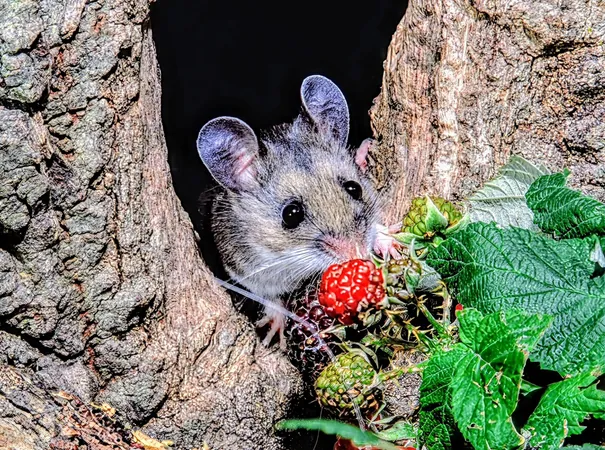
How Deer Mice are Redefining Our Understanding of Adaptive Evolution
2024-11-11
Author: Wei
Introduction
Deer mice are not just your average rodents; they are remarkable survivors that flourish in diverse habitats across North America, from the sun-soaked plains of Nebraska to the frigid heights of the Rockies and Sierra Nevada. But what fuels their extraordinary adaptability? Is it their ability to acclimatize to varied environments or an evolved capacity to thrive under specific local conditions?
The Study
A groundbreaking study at the University of Nebraska-Lincoln, led by Naim Bautista, a postdoctoral researcher, sought to unravel this mystery by investigating the physiological differences between highland and lowland deer mice. Over an intense seven-week period, the researchers simulated an ascent to altitudes of 6,000 meters, observing how these mice coped with cold stress and diminishing oxygen levels.
Findings
The experiment divided the mice into two groups: a control group that remained at sea level and an acclimation group that braved the simulated climb. The findings were striking. While both groups faced challenges, the highland deer mice exhibited specialized adaptations allowing them to maintain their body temperature and efficiently transport oxygen, crucial for survival at high altitudes.
Significance of Research
According to Bautista, "The results show us that the highlanders and lowlanders do not share a generalized ability to acclimatize to changing environmental conditions." Instead, highland deer mice possess unique genetic traits that enable them to thrive under low-oxygen conditions, including a mechanism that prevents the thickening of the heart’s right ventricle—a common issue for lowland mammals facing hypoxia.
Broader Implications
This research significantly enhances our understanding of adaptive evolution in animals. Not only does it highlight the distinct survival strategies of the deer mouse, but it also opens the door to valuable insights into evolutionary biology and conservation science. The unique physiological traits observed in these mice could hold keys to understanding how other high-altitude species have adapted and how they may respond to climate change.
Impact on Human Health
The implications extend even further into human health, suggesting that understanding how deer mice prevent pulmonary hypertension may illuminate new treatment options for conditions associated with low oxygen, such as high-altitude sickness.
Future Research
Looking ahead, Bautista plans to expand this fascinating research to investigate the yellow-rumped leaf-eared mouse, which resides at astonishing elevations in the Andes, potentially reaching over 22,110 feet.
Conclusion
As we await further discoveries, one thing is certain: the world of deer mice offers profound lessons on resilience and adaptation. This study, recently published in *Proceedings of the National Academy of Sciences*, not only sheds light on adaptive strategies of a single species but also hints at broader ecological and health implications that may dot the horizon of scientific research.


 Brasil (PT)
Brasil (PT)
 Canada (EN)
Canada (EN)
 Chile (ES)
Chile (ES)
 España (ES)
España (ES)
 France (FR)
France (FR)
 Hong Kong (EN)
Hong Kong (EN)
 Italia (IT)
Italia (IT)
 日本 (JA)
日本 (JA)
 Magyarország (HU)
Magyarország (HU)
 Norge (NO)
Norge (NO)
 Polska (PL)
Polska (PL)
 Schweiz (DE)
Schweiz (DE)
 Singapore (EN)
Singapore (EN)
 Sverige (SV)
Sverige (SV)
 Suomi (FI)
Suomi (FI)
 Türkiye (TR)
Türkiye (TR)